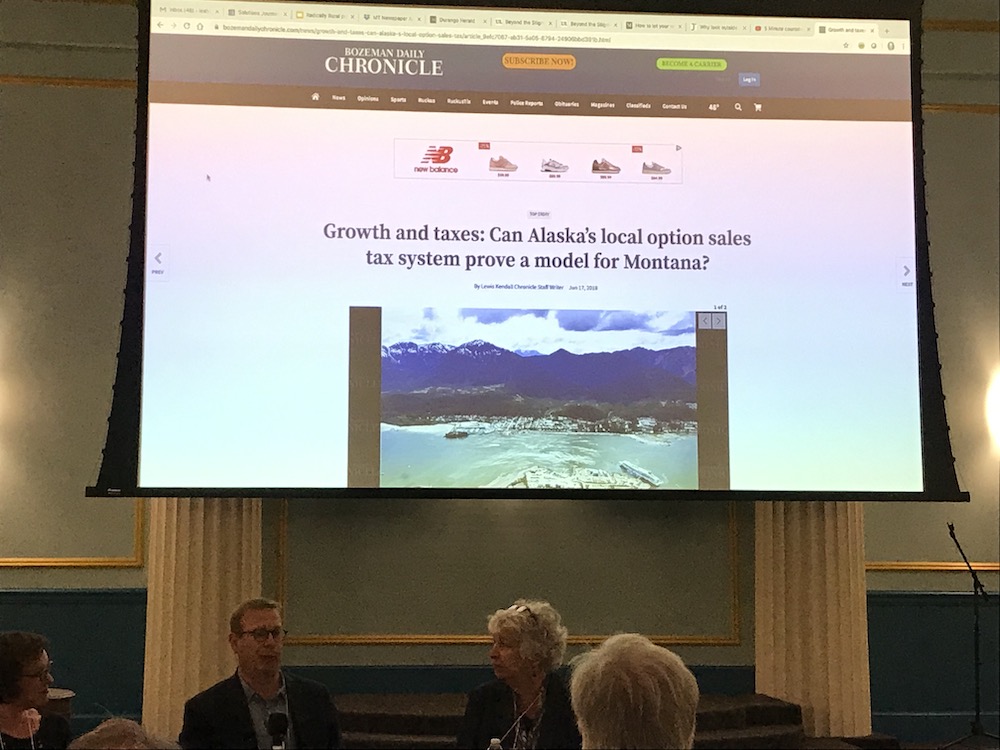Ideas from the ‘Radically Rural’ summit: Building a healthy media ecosystem through collaboration
There were several reasons that Terry Williams wanted The Keene Sentinel to help host a community journalism track at the Radically Rural summit. For one thing, he wanted to start a conversation about new ways to provide news coverage to communities from across the country. But he’d be the first to tell you that some of his intentions were selfish, too.
“We think a lot [about] entrepreneurship being for young folks,” the Sentinel’s publisher told a roomful of journalists at the start of the summit. “But we know in this circle that if we ever stop innovating, we’re all in big trouble.”
Editors, publishers and reporters gathered in Keene recently to talk about one of the most important requirements for preserving rural communities: a healthy media ecosystem. And for Williams and the Sentinel, which is located in an isolated part of New England, it was a perfect opportunity to find new ways to fund the newsroom.
“If you don’t have strong local news, any community is diminished as a result,” Williams said in an interview between panels. “With local news coverage under siege, we need new ideas and new ways in particular to funding it. If we can come away with ways to fund newsrooms, that’d be a success.”
One of those new ideas is collaboration. When newsrooms were financially healthy, local news outlets sparred continuously in rural America. Perhaps the daily newspaper scooped the weekly on a certain topic, but the weekly followed that up by securing an exclusive interview. Later, the TV news station might broadcast that to a larger audience.
At the Radically Rural summit, it was clear that those days are all but over. Nick Ehli, executive editor of Montana’s Bozeman Daily Chronicle, has the difficult job of covering one of the fastest-growing counties in the country and providing adequate coverage of rural areas that are often otherwise abandoned. His solution is to do quality reporting, convince the people at the top to help fund it, and then give those stories away to other media outlets around the state for free.
In return, those other media outlets offer what they can to the Chronicle. In one instance that meant partnering up to file a lawsuit against the Montana commissioner of higher education, who was accused of using state funds to pay for flights, hotel stays and football tickets.
“Together, we can afford to sue the state,” Ehli said. “Let’s do that.”
For success to be sustained, Leah Todd of the Solutions Journalism Network said it’s important for the media outlets to collaborate continuously, not just here and there.
“These news organizations are not dating,” Todd said. “They’re engaged.”
As for the Sentinel, which is about an hour’s drive away from the next closest daily newspaper in New Hampshire, collaboration is something from which it could benefit. Williams cited a collaborative project about sexual violence in North Carolina as an inspiration for something he’d like to try in the Granite State. Those projects, he said, take a lot of work, and it helps to have more hands — and organizations and their funding — involved.
“It’s just something I think you’re going to see more and more every day,” Williams said. “Now the competition is for ways to fund a newsroom, so it’s completely flipped. We just have to figure out a better way and a better model to cover stories in a deeper sort of way, share those stories across readers we don’t even have, and, at the same time, help communities find solutions to problems.”
The Sentinel is a part of the Granite State News Collaborative, a group focused on amplifying coverage of key New Hampshire issues through collaboration. The Berlin Daily Sun, The Eagle-Tribune of North Andover, Massachusetts (its coverage area includes several New Hampshire towns), The Laconia Daily Sun, and the Seacoast Media Group, which includes the Portsmouth Herald, are also members. NH PBS is the only multimedia organization that is a part of the collaboration. To be able to reach as wide an audience as possible, it helps to have a variety of media involved, according to Dawn DeAngelis, the chief content officer at NH PBS.
“Trust is the most important thing. I think what everyone is looking for right now is authenticity,” DeAngelis said. “New Hampshire has wonderful opportunities where there are solutions [to report on] … Maybe we should focus more on the people who are creating solutions in these communities.”





